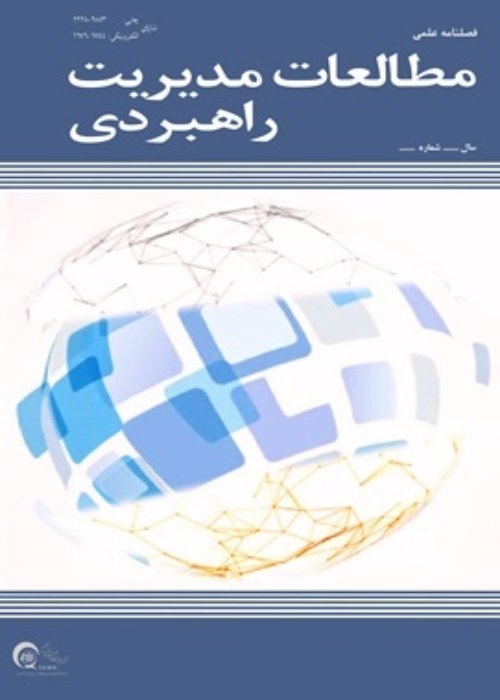Assessing the sustainable development of free trade-industrial zones in Iran
Author(s):
Article Type:
Research/Original Article (دارای رتبه معتبر)
Abstract:
Aim and introduction. Today’s business leaders are seeking to achieve sustainable development in order to succeed in the competitive market. Based on the theoretical framework, research background and experts' opinions, it can be concluded that despite the increase in the number of free zones in Iran, they have mainly focused on importing different products to the country. In other words, there is not a balanced growth in these areas in terms of sustainable development indicators, including economic, environmental and social indicators. In addition, the performance of the free zones has not been satisfactory from attracting foreign investment and employment viewpoints. Therefore, considering the high potential of free trade-industrial zones in economic growth of the country, it is necessary to take the all dimensions of sustainable development into account. Methodology.The main purpose of this study is to identify and analyze the indicators of sustainable development in free zones of Iran. To accomplish that, considering three main areas including commercial, industrial and tourism, the sustainable development indicators of free zones under both internal and external dimensions from three aspects of environmental, economic and social are studied using fuzzy Decision Making Trial and Evaluation Laboratory (DEMATEL) technique. This technique is a structural method that is able to represent the causal relationships among factors which uses a straightforward diagram and some matrices. This technique contains eight steps of 1) defining appropriate scales, 2) establishing the direct-influence matrix, 3) normalizing the direct-influence matrix, 4) constructing the total-influence matrix, 5) deriving the influential relation map (IRM), 6) designing a scatter diagrams, 7) setting the threshold values, 8) building cause and effect relationship diagrams.In this regard, a DEMATEL questionnaire based on the 5-choice verbal values scale consisting of 44 internal and 24 external indicators is designed. Then, the results received from eight experts are analyzed in MATLAB and Excel software. The obtained results show that the variability of internal indicators is more than the that of external indicators which implies that the internal indicators have a wider range of relationships than the external indicators. Moreover, the dispersion of internal effect indicators is more than that of internal cause ones while there is a slight difference between the dispersions of external cause and effect indicators. Besides, the existence of complex relations among both internal and external indicators is confirmed. The obtained results from internal indicators show that three indicators: 1) separation, collection, transportation, recycling and disposal of industrial waste, 2) reducing the use of hazardous industrial waste, and 3) Satisfaction of supply chain stakeholders, respectively, have the most relationship with other internal indicators. In other words, focusing on the mentioned indicators can make a significant improvement in other internal indicators. Furthermore, three internal indicators of 1) providing interest and services for stakeholders, 2) proper strategy to increase market share, and 3) encouragement of employees to participate in sustainable development, respectively, have the least relations with other internal indicators. Consequently, concentrating on these indicators leads to little changes in other internal indicators. The results obtained from external indicators confirm that three indicators of 1) culture of compliance with safety and environmental standards by companies, 2) prevention of marine pollution by ships, and 3) raising the awareness of tourists and customers regarding traffic issues, respectively, are the most related indicators to other external ones. As a result, changes in these indicators can significantly affect the other external indicators.Discussion and Conclusion.In addition, three indicators of: 1) encouraging tourists and customers to buy eco-friendly products, 2) cooperating with charities and organizations to support the local community, and 3) informing tourists and customers to respect the customs, traditions and comfort of the local community, respectively have the least interaction with the other external ones. Hence, paying attention to these three indicators results in a little changes in other external indicators. As another important finding, it can be referred to the influential internal and external indicators. In this regard, the indicators: 1) providing sustainable development policies, 2) air quality monitoring and reduction of greenhouse gas emissions, and 3) establishment of industries are the most effective internal indicators, respectively, while 1) educating local community regarding sustainable development, 2) reducing energy consumption by companies, and 3) cooperation with international companies are the most influential foreign indicators, respectively.Finding. Although, this study determines the complex causal structure and identifies influential and influenced internal and external indicators, it does not calculate the relative importance of the indicators. Besides, despite the internal relation among internal and external indicators of sustainable development, the proposed method ignores the multiple relations among them. Therefore, future researchers can be directed to use of multi-criteria decision-making techniques to quantify the relative importance of sustainable development criteria of free trade-industrial zones.
Keywords:
Language:
Persian
Published:
Journal of Strategic Management Studies, Volume:13 Issue: 51, 2022
Pages:
227 to 244
magiran.com/p2527376
دانلود و مطالعه متن این مقاله با یکی از روشهای زیر امکان پذیر است:
اشتراک شخصی
با عضویت و پرداخت آنلاین حق اشتراک یکساله به مبلغ 1,390,000ريال میتوانید 70 عنوان مطلب دانلود کنید!
اشتراک سازمانی
به کتابخانه دانشگاه یا محل کار خود پیشنهاد کنید تا اشتراک سازمانی این پایگاه را برای دسترسی نامحدود همه کاربران به متن مطالب تهیه نمایند!
توجه!
- حق عضویت دریافتی صرف حمایت از نشریات عضو و نگهداری، تکمیل و توسعه مگیران میشود.
- پرداخت حق اشتراک و دانلود مقالات اجازه بازنشر آن در سایر رسانههای چاپی و دیجیتال را به کاربر نمیدهد.
In order to view content subscription is required
Personal subscription
Subscribe magiran.com for 70 € euros via PayPal and download 70 articles during a year.
Organization subscription
Please contact us to subscribe your university or library for unlimited access!


